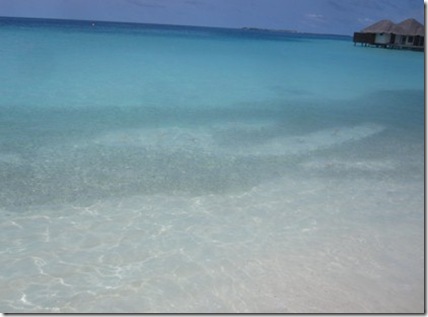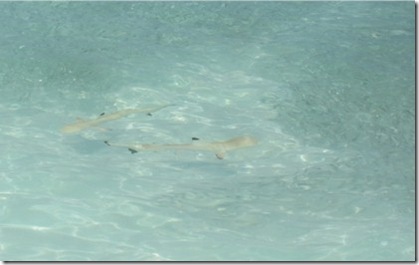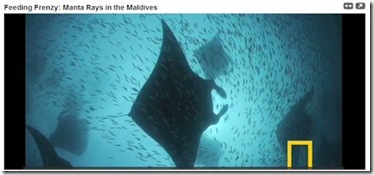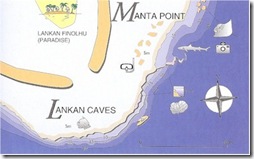A perfectly tranquil lake-like ocean with shimmering shades of mottled blue…then suddenly it erupts with a hundred tiny splashes. What the…?
This is fish hunting. Big fish going after little fish. The little fish congregate in big schools for some sort of anonymity in numbers, but it only seems to concentrate the opportunity for the big fish like trevallys and jacks. These predators also work in teams casually circling, or should I say ‘encircling,’ their targets until…Wham…they dart through the schools trying to snap at any unfortunately glassfish or blenny they can get their teeth into. The prey shift gears from their near suspended animation to an immediate emergency retreat to any exit they can find including right out of the water into the sky if that means safety.
It is a delightful ‘Mutual of Omaha’s Wild Kingdom’ spectacle that you see across the Maldives. But, we were especially captivated by it during our very first trip to the Maldives visiting ‘Laguna Beach’, now redeveloped and renamed to Velassaru. My favourite picture ever taken in the Maldives came about because we were woken from our sleep all the way over in our bungalow early in the morning from the racket of one of these ‘feeding frenzies’. While we have seen many similar sights, we always felt that they were never quite as stunning as what we witnessed with predictable regularity and consistently large scale as what we saw at Velassaru.
We always chalked up the difference to ‘first-timer nostalgia’. But then we had the chance to re-visit the island on our last trip in July and what did we see the very minute we stepped off the boat…cinematic feeding frenzy. In the picture above, you can see the vast shoals of tiny, silvery fish in the lagoon. The light-shaded shapes in the midst of them are the wake of reef sharks who have joined the trevallys in their stalking. The fish wisely clear a path as the juvenile sharks wiggle through their masses. The picture below shows the dynamic more clearly and you can click on it to see even more close up.
I’m suspecting that the intensity of the feeding frenzy action at Velassaru has something to do with its massive shallow lagoon. In the direction of the water villas, the lagoon extends for 2 kilometres. While the long, sandy table means no house reef, I think it does attract more schools like this looking for the protection of the shallows.





